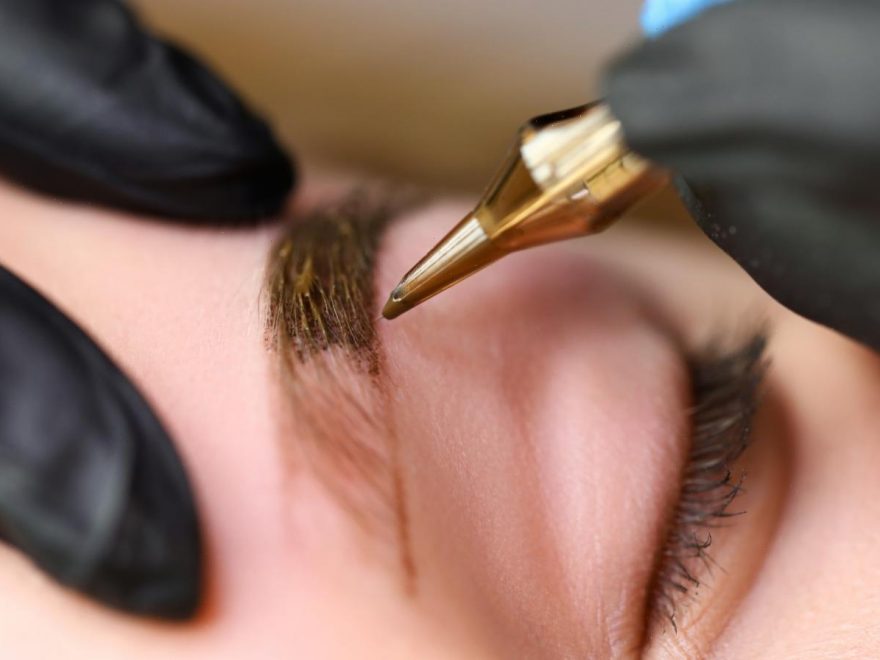Perfecting your eyebrows can be a struggle; there’s a lot to think about, from how they are shaped to how full and fluffy they should be. The truth is that your eyebrows play a pivotal role in the aesthetics of your face, per Westlake Dermatology: it’s the combination of the shape, fullness and symmetry of the eyebrows that highlight the eyes and frame the face.
The issue is that achieving brows that are truly drop-dead gorgeous can be a struggle, which is one reason why eyebrow tattooing has become an increasingly popular avenue for attaining near-perfect brows. Unlike microblading, which is a form of semi permanent eyebrow tattoo, eyebrow tattooing is permanent. Once you’ve had your eyebrows tattooed, it’s almost impossible to remove.
According to Westlake Dermatology, eyebrow tattooing is no different to any other tattooing process. The tattoo artist uses a tattoo needle filled with ink to repeatedly penetrate the skin using a fast-tapping movement, applying ink deep in the dermis, creating the tattoo.
Aftercare is important following eyebrow tattooing
According to MBrow Studio, proper aftercare is vital for achieving long-term success, effectiveness, and overall satisfaction after eyebrow tattooing treatment. In order to achieve the very best outcome from permanent makeup application, such as brow tattooing, it’s important to know how to aid healing and prevent infection.
Feeling “tingling” and tenderness and noticing some swelling is normal post-procedure, according to MBrow Studio. An over the counter painkiller can help to reduce the expected discomfort. However, if pain continues for more than a few days or the swelling fails to go down, it’s important to consult a medical professional to rule out infection.
It’s also advised that for two weeks after the procedure that you limit physical activity, as well as exposure to direct sunlight, as this may cause tattoo fading.
As per MBrow Studio, you should be provided with an aftercare ointment to apply to the tattooed area; it’s vital that you use the given cream as directed. Usually, you would be directed to use a clean, damp cotton swab to remove any excess ointment from previous applications. Then, using another cotton swab, you would apply fresh ointment to the affected area, coating the eyebrows.
When cleaning your brows, ensure that you are gentle and only use water for the first few days after the procedure. After the first week, you can then swap to a gentle cleanser or antibacterial soap.
How long do eyebrow tattoos take to heal?
According to MBrow Studio, four to five days after the procedure the new eyebrow skin will begin to harden and itch. This is a sign that your eyebrows are healing. While it may be tempting to scratch, it’s important to avoid scratching as this could cause an infection or prevent scabbing. Once the scabbing has peeled away, the healing ointment no longer needs to be used as the healing process is complete. MBrow Studio advises that if you are unsure when scabbing has occurred, to continue using the healing ointment for 14 days after the procedure.
As per MBrow Studio, when the tattoo is first completed, the ink will look extremely dark and thicker than expected or may appear brighter than it should be. As the area begins to scab and peel, the ink will change color. Over time the pigments in the ink will soften and look more like the requested color; this process should take around four weeks.
Six to eight weeks after the initial procedure, a touch up procedure is usually scheduled. This allows for any modifications to be made to the shape or thickness of the tattoos, and allows for any areas that need color correcting to be amended. The touch-up procedure is important as it helps to ensure the tattoo lasts for a longer period of time and embeds the ink more deeply in the skin.
Source: Read Full Article



